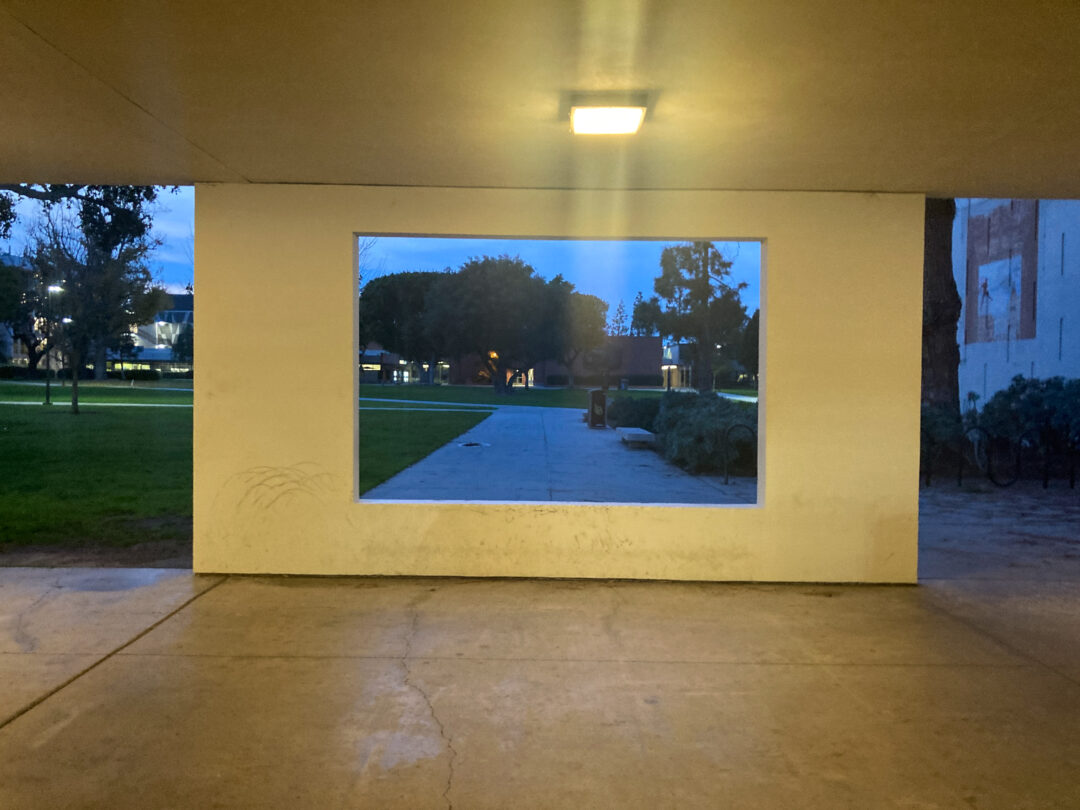Window Wall for Cal State Long Beach
Robert Irwin
Robert Irwin’s explorations of light as a medium for art, and his early association with the group of conceptual artists who flourished during the 1960s, established him as a member of the avant−garde. The 1975 Museum Studies class exhibition, A View Through, focused upon issues of light and transparency, as defined by California artists in the 1970s. Included in the exhibition was this site−specific work, Window Wall for Cal State Long Beach. Although intended as a temporary installation, responses to this subliminal architectonic sculpture were so great that Irwin gave permission for its reconstruction in permanent materials in 1976. The “window” frames an ever−changing panorama of campus activity. The minimal form and conceptual simplicity of Window Wall for Cal State Long Beach have made it an ongoing foil for student projects, which have included an installation that appeared to pierce the “wall,” as well as one memorable piece, Curtains for Robert Irwin.
Robert Irwin was born in Long Beach, California, in 1928, and studied at both the Otis Art Institute (1948−50; today, the Otis College of Art and Design) and the Chouinard School of Art (1952−54), both in Los Angeles. Throughout the 1950s, he painted in the Abstract Expressionist style, only to reject it by the early 1960s for Minimalism. In the 1960s, Irwin experimented with ways in which to make a work of art represent nothing other than itself.
Additionally, Irwin’s outdoor sculptures and installations draw attention to the viewer’s perceptual experience of site and place. His site−specific works of the 1970s and ‘80s include indoor works at the UAM at California State University, Long Beach, the University Art Museum at Berkeley, and Oberlin College. In the mid−1990s, Irwin was selected to create a major outdoor installation on the grounds of the J. Paul Getty Trust’s Getty Center in Brentwood, California. Recently his work has been included among exhibitions in Karlsruhe, Germany; the Reina Sofia, Madrid; the Guggenheim, New York; the Smart Museum of Art, Chicago; and many more.
GET DIRECTIONS »





